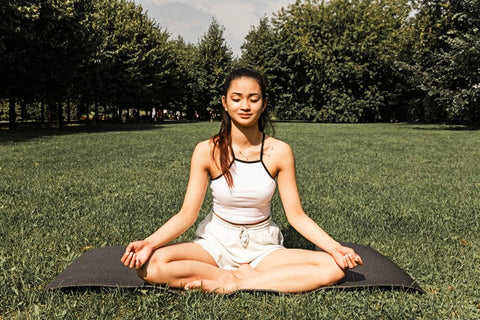
How to Meditate
Life these days is hectic. We’re constantly being pulled in different directions and rarely have enough time to ourselves. That’s where meditation can help. Regular practice of meditation can help reduce stress levels, improve focus and has many health benefits including lowering blood pressure and reducing anxiety. And bonus – it’s practiced alone 😊
Think of meditation as the mental equivalent of your physical workout – it’s a mental exercise that involves focus, relaxation and awareness. And like a physical workout, you need to practice and make it part of your routine, in order to improve and to reap its benefits. Not sure where to start? See below for our tips.
Location, location, location
Find a location that is quiet and peaceful so you can focus on meditating. The space should also be somewhere where you will not be interrupted for the duration of your meditation. As long as the space is big enough for you to be comfortable, it is big enough.
Get comfy!
Find a position that is comfortable for you and that will be comfortable for the length of your meditation. You can sit on the ground cross legged, on a cushion, couch or chair. Or, you can lie down or stand up – pretty much any position will work as long as you are comfortable.

Stretch it out
Since you’ll be in one position for the length of your meditation, it’s a good idea to stretch before you begin so you won’t get stiff. Just a few minutes of light stretching can help ease tension from your neck, shoulders, back and legs, and help you focus when you start meditating.
Set a time limit
Beginners should start small, with 2, 3, 5 or 10 minute sessions to begin. This will allow you to practice and get the hang of meditation. You’re also more likely to stick to a short session every day over a long one. Once you get into a good routine, you can increase the length of your sessions.
Close your eyes
While you can definitely meditate with your eyes open, it may be easier when starting out to keep your eyes closed, to shut out any visual distractions. Closing your eyes can also allow you to focus on your breathing.
Check in with yourself
During your meditation session, try doing an emotional check in with yourself. How are you feeling? How is your stress level? Are you feeling anxious? How busy is your mind? All these questions can help you identify what’s on your mind and what you’re bringing into your meditation.
It's all about your breathing
Breathe in and out naturally. Pay attention to your breath as it comes in through your nose and travels to your lungs, and of how your stomach expands and contracts. You can also try counting “one” as you inhale and “two” as you exhale. Try not to think about anything but your breathing.
Full body scan
When you’ve got the hang of your breathing, another exercise to try is a body scan. Start at the top of your head and mentally scan down your entire body. Notice what body parts feel relaxed and which feel tense and which feel comfortable or uncomfortable. Take a breath and focus on consciously relaxing any body parts that feel tense or uncomfortable. When you get to your toes, take a breath and try focusing on your body as a whole and releasing any lingering tension from it.

Bring your mind back
Your mind is bound to wander away from your breathing during your meditation and onto other things. When you notice it happening, just focus your attention back to your breathing.
As you can see, meditation takes practice and dedication. Try to incorporate it into your daily life – make it a habit to start your day with it! Once you get the hang of it using our tips, you’ll find the benefits of meditation like calmness, peacefulness and more focus spilling over to all aspects of your life. And as long as your end your meditation session calmer or happier than when you started, you’re doing it right 😊
To your Balanced health,
Your friends at The Balanced Company

